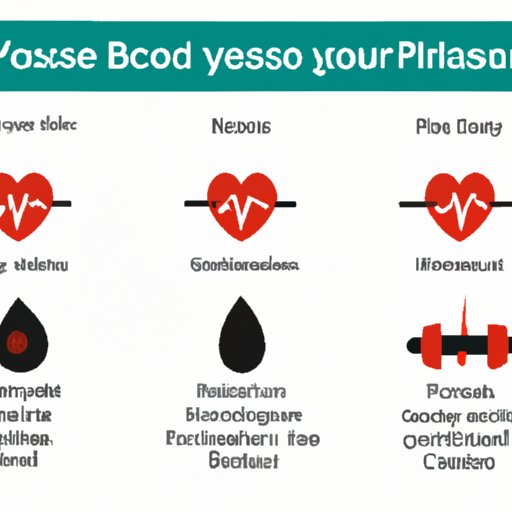Introduction
Blood pressure is the force of blood against the walls of your arteries as your heart pumps it throughout your body. It’s a vital measurement of cardiovascular health. High blood pressure (hypertension) occurs when this force is consistently too high, making it harder for your heart and blood vessels to function properly. Hypertension is a major risk factor for cardiovascular diseases like stroke and heart attack. Regular exercise has numerous health benefits, but does exercise increase blood pressure? In this article, we’ll explore the correlation between exercise and blood pressure.
The Benefits of Regular Exercise for the Cardiovascular System
Exercise is a fantastic way to improve your cardiovascular health. When you engage in physical activity, your heart and blood vessels become more efficient, reducing strain on your cardiovascular system overall. Regular exercise can lower blood pressure, decrease the risk of heart disease, stroke, and other chronic health conditions. It can also improve mood, increase energy levels, and promote better sleep. The American Heart Association recommends at least 150 minutes of moderate-intensity exercise per week to decrease the risk of cardiovascular disease.
The Correlation between Exercise and High Blood Pressure
Studies have shown that exercise can both increase and decrease blood pressure. In the short term, exercise can temporarily raise blood pressure due to an increase in heart rate and the need for more oxygen. However, once you’ve finished exercising, your blood pressure typically returns to normal levels. In the long term, regular exercise can help lower blood pressure by making your heart and blood vessels more efficient.

The Effects of Different Types of Exercise on Blood Pressure
The effects of exercise on blood pressure can vary depending on the type of exercise. Aerobic exercise like running, swimming, and cycling can lower blood pressure over time. This is because aerobic exercise strengthens the cardiovascular system through consistent moderate-intensity activity. Resistance training like weightlifting can also lower blood pressure, but not to the same extent as aerobic exercise. It’s important to incorporate a variety of exercises into your fitness routine to reap the benefits of both types of exercise.
Common Misconceptions about Exercise and Blood Pressure
It’s a common myth that exercise is dangerous for individuals with hypertension. However, exercise is generally safe and beneficial for people with hypertension who are otherwise healthy. Certain factors like medication and hydration can affect blood pressure during exercise, so it’s important to talk to your doctor and monitor your blood pressure regularly. Additionally, it’s crucial to listen to your body and only engage in exercises that feel safe and comfortable for you.
Tips for Safely Incorporating Exercise into a Hypertension Management Plan
If you have hypertension, it’s important to talk to your doctor before beginning any exercise routine. Once you’ve received medical clearance, start slow and gradually increase the intensity and duration of your workouts. Consider monitoring your blood pressure before, during, and after exercise to fully understand how your body responds to physical activity. Safe and effective exercises for individuals with hypertension include walking, cycling, swimming, yoga, and other low-impact activities.
The Role of Exercise in Reducing the Risk of Developing High Blood Pressure
Regular exercise can also help prevent hypertension from developing in the first place. Exercise not only strengthens the cardiovascular system, but it can also help manage other risk factors for hypertension like stress, obesity, and a sedentary lifestyle. Incorporating physical activity into your daily routine can have a significant impact on your overall health and wellbeing.
Conclusion
As we’ve discovered, exercise plays an important role in hypertension management. Regular exercise can improve cardiovascular health, decrease the risk of chronic health conditions, and reduce blood pressure. By incorporating a variety of exercises and monitoring your blood pressure regularly, you can safely and effectively use physical activity as a tool to manage your hypertension. Make exercise a priority in your daily routine to experience the many benefits it has to offer.
